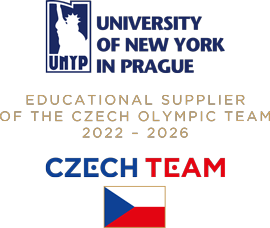The Business of Ingress

A man stands in front of modern sculpture near the entrance to Bratislava’s Eurovia shopping center. He stares at his smart phone, alternately reading, drawing, pressing the screen, seemingly oblivious to his surroundings. After about five minutes, he resolutely sets off towards the wall of the shopping center, stopping about 20m away from his previous position. In the cool, fall darkness, he faces the wall and almost blends in to background, still engaged with his phone. After a minute, another man walks up and faces the wall, standing about two meters away from the first man, and engages his phone in the same manner. After about 10 seconds, the second man turns to the first and asks:
“Ingress?”
Glances at the second man: “Yeah.”
“What color?”
“Blue. You?”
“Blue.”
Turns to the second man: “Good. Let’s go blow some sh*t up.”
They head off to circumnavigate the shopping center in 20m– to 40m-increments, systematically blowing sh*t up, building up structures, linking them, all on their mobile phones. The crowd around the two men is unaware that the world around them is not what it seems.
A casual observer might surmise that the two guys were playing a “video game.” A more astute observation would be that two complete strangers met for the first time and engaged in extended, sustained, low-level exercise while interacting with the environment around them and coordinating their activities by means of a location-based, augmented-reality, massively multiplayer on-line game.
Ingress is both of those games. After four years of continuous development, the game is quite robust. It has a Sci-Fi backstory that continues to evolve and in which players can participate and even interact with live characters. It has in-game awards and league tables; in-game, player-created artistic collections; the strategy and tactics of Sun Tzu; a local map; an in-game, player-built micro-tourism functionality; an inherent requirement to socialize cooperatively that scales to hundreds of thousands of people at a time; an out-of-game black market; and, most importantly, the requirement of low-level exercise in order to play. Or, you can just blow sh*t up.
It’s free as in beer. That’s right, a company made a game that half-a-million or more people regularly play and gave it away for free. Not only that, a significant number of those players would riot if the company made the game non-free or stopped developing it.
Big problem: how to monetize it. The company, Niantic, tried to monetize the game through in-game corporate sponsorship and eventually some in-game purchases. Ultimately, that’s not such a good business model, as there are inherent limits to that kind of profitability and the lifespan of video games is rather brief in terms of profit-maximization. The company did something smart, however. Niantic leveraged its experience with Ingress and turned a game into a gaming platform. You may know the company’s other major product: Nintendo’s Pokemon Go.
Still, Niantic is an enigma as a business. Applying Michal Porter’s Forces Framework to Niantic reveals some very fascinating information about this enigma:
- The threat of new entrants is low due to Niantic’s gigantic head start.
- There are no suppliers because the product is code.
- There are few actual buyers because the game is free; yet, the customers are a large group that tend to be hostile to the idea of paying for the game.
- The threat of substitutes is very high.
- There is low rivalry intensity because potential competitors can’t see the profitability in the industry.
- Niantic is a complement for 100s of industries.
Niantic is in a niche industry, into which traditional business strategists probably would not recommend entering. So, how does a company like this develop and sustain a competitive advantage? Being a supplier to a customer like Nintendo clearly is unique, profitable, and a significant competitive advantage. Yet, we’ve seen interest in Pokemon Go cool significantly, so sustainability clearly is a major challenge.
The last force in Porter’s framework is perhaps the most interesting. Ingress players often are gearheads and/or collectors. Moreover, they travel a lot—often in groups of a few thousand—to events around the world they call Anomalies. They need good phones and accessories, auto fuel, airline tickets, temporary accommodations, swag, food, shoes, and, of course, beer. Combined with Pokemon Go, Niantic stimulates the purchase of seemingly limitless numbers of other products, making it a very attractive complement for myriad businesses of all types of scale. That would seem to suggest that, in addition to partnering with large gaming companies, Niantic could generate quite a large volume of smaller, transactional profits through integration with companies for whom Niantic is a complement.
I often have wondered how this company has managed to pay its bills while simultaneously and happily letting them add value to my life for free. Porter’s framework gave me a little insight into how Niantic seems to make it work. At the same time, the perspective of looking at the idea of complements as an important part of business strategy became much more concrete. Moreover, this perspective has broad application in many areas of life.
“No more green in sight.”
“That’s a nice blue blanket to sleep under. Enough frog-stomping for the night.”
“Beer?”
“Crap. There’s a troop of frogs on our six.”
“We’ll clean up after them once they pass through.”
“AP for everyone!”
“Beer it is. What’s your name?”
Written by: Charles Dunbar
Related Articles
UNYP Chronicle Newsletter
The e-mail address you provide will be used only to send you the newsletter. Your privacy is important to us.
For more information download our UNYP Brochure.

Contacts
University of New York in Prague
Londýnská 41, 120 00 Praha
ID no: 25676598
Phone:
+420 224 221 261
![]() Skype
Skype
Email: unyp@unyp.cz







